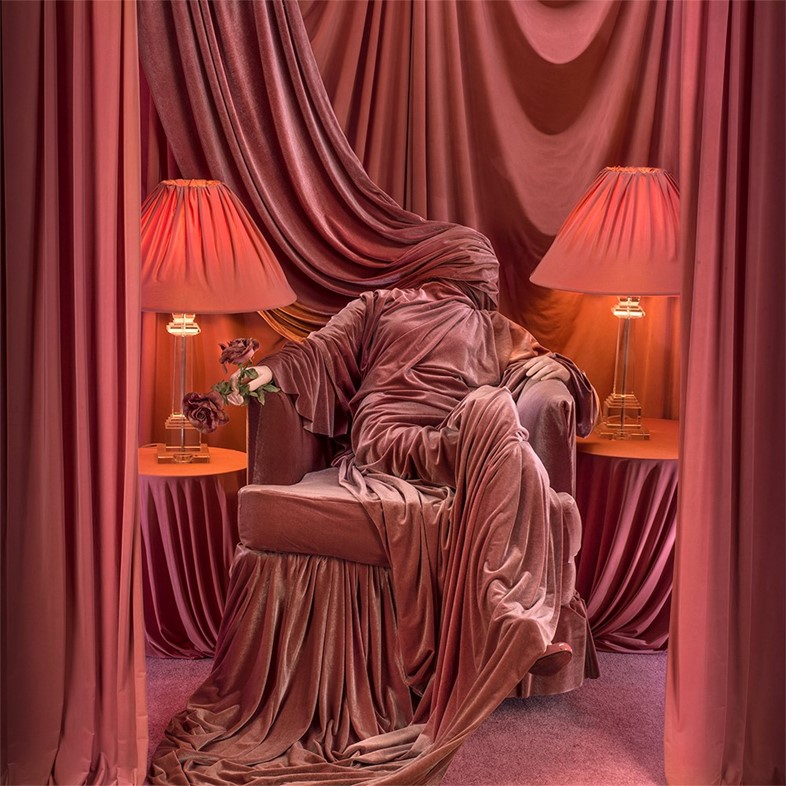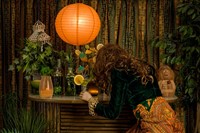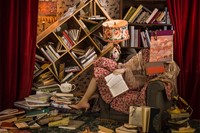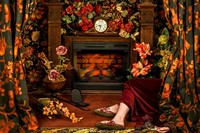The latest iteration of the American artist’s Anonymous Women series takes inspiration from Cluedo and her challenging experience of ‘home’
Over the past four years, American artist Patty Carroll’s life has been in a state of flux as the question of home has had her turned upside down. While managing a move from her primary residence in Indiana to a new apartment and studio in Chicago, Carroll was simultaneously doing renovations on a place in Miami.
“Home became an overwhelming situation of ‘What the hell am I doing?’ and ‘Where am I today?’” Carroll laughs. “It was more than I could deal with. Houses were doing me in.”
But rather than go under, Carroll transformed the sensation of chaos and impending doom into a series of photographs entitled Domestic Demise, which opens at Catherine Couturier Gallery in Houston on January 19.
The latest chapter in Carroll’s ongoing Anonymous Women project, Domestic Demise takes the game of Cluedo as its departure point, staging lavishly decorated scenes inside rooms like the Conservatory, Library, Kitchen, and Hall. Here, the titular ‘Anonymous Woman’ meets her untimely end. The moral of the story: The perfect home is a catastrophe in the making – but at least you will go out in style. You might even say, “Death becomes her”.
“I think of my studio as a playhouse,” Carroll says with a laugh. “Instead of having a dollhouse of miniatures I have it life-size, which is really fun. I love the idea of being able to tap into the idea of an interior I would never live in myself.”
For Carroll, inspiration takes many forms, but if there is a single thread that connects the scenes, it would be Hollywood musicals of the 1950s and 60s such as South Pacific, West Side Story, and Carmen Jones. Carroll revels in the “crazy fictionalised stage sets that came to life. They were so saturated in colour, and each scene is so beautifully conceived. That era was about the perfect housewife and the perfect interior.”
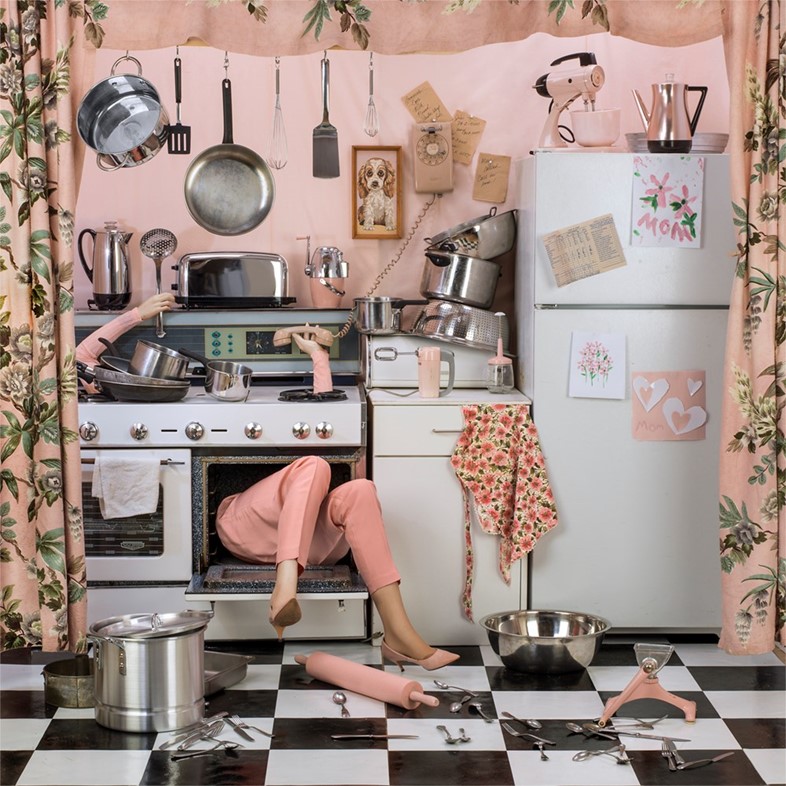
Drawing on her training in graphic design, Carroll grounds each scene in a colour scheme, and then allows the narrative to slowly unfold inside her studio on a specially constructed 2.4 x 2.4 metre space, with sidewalls that can be added or removed as the picture demands. “Since they are fictional interiors, we need to make them as believable as possible while dealing with the constraints of a small space, so everything has to be condensed,” Carroll explains.
“We just did a picture yesterday. I wanted to do a bathroom picture with pinks and purples. I was at a cheapy fabric store in Miami where you can buy for $2.50 a yard, so I did and shipped them to back to myself. Then I went online and found the perfect shag rug. I’ll start with some things and we’ll get in the middle of it and then I’ll have to get more stuff or I will remember we have things in the garage.”
The garage is where Carroll keeps dozens of plastic bins filled with props, echoing a defining moment of her childhood. “When I was four, there was a lady next door with two daughters. They had a side porch full of dolls, doll clothes, doll furniture – there were trunks of stuff and it was such a treat to go over there and rummage through these things, and find the right doll to play with the girls. That is what my garage is like – it’s the adult playhouse full of stuff.”
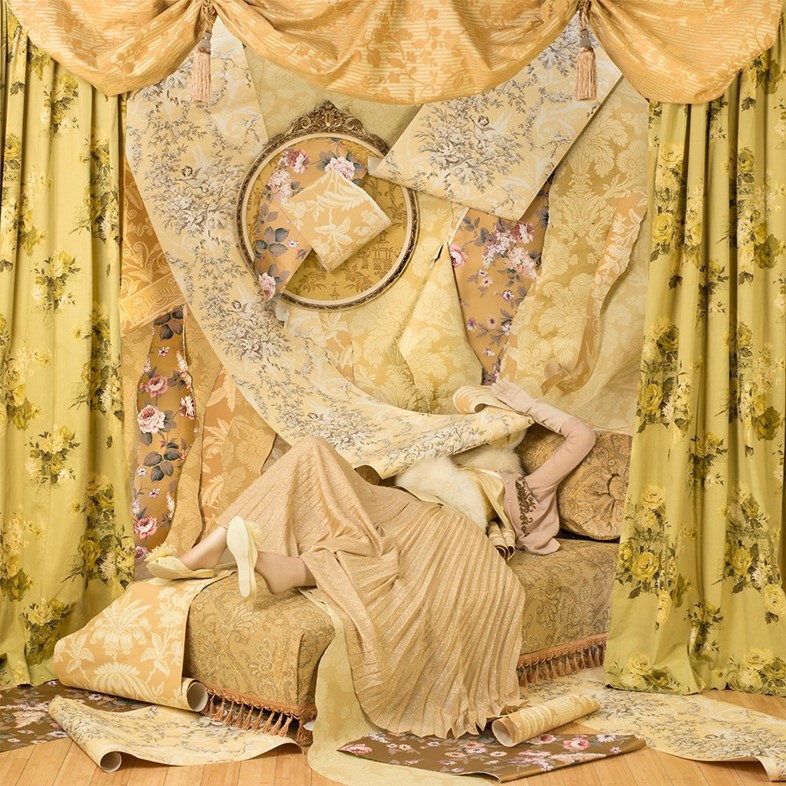
The glamour and humour of Carroll’s work provides a counterbalance to deeper issues she has been wrestling with since living in London with her husband. “I had spent a lifetime trying to develop a career using my own name, but I was always referred to as ‘Mrs Jones,’” Carroll reveals.
In response, the ‘anonymous woman’ was born. Carroll began photographing busts of mannequins with domestic objects like a head of lettuce or a frying pan placed in front of their faces so that their identity was reduced to a servile activity. Then, after her niece joined the US Marines and went to Iraq on the first sortie following 9/11, Carroll began to think about all the women whose homes were being destroyed and the project took on a new dimension.
“At the time I was trying to create a mythical perfect home,” Carroll recalls, describing her experiences renovating her former Indiana ranch house to its perfect 1950s charm. The irony was not lost on Carroll, and began to find its way into her art, transforming stresses and fears of everyone who has ever run a house.

Patti Carroll: Domestic Demise is at Catherine Couturier Gallery, Houston, from January 19 – February 16, 2019.
